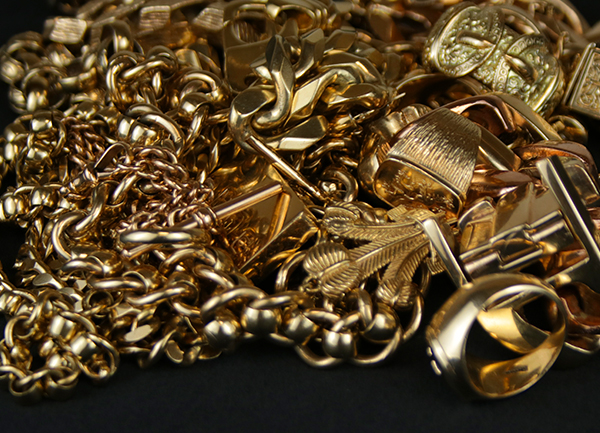Neither gold-plated nor gold-filled jewellery is solid gold. However, these two processes are different from each other.
This post explores what the terms “gold-plated” and “gold-filled” actually mean and the pros and cons of each.
What Is Gold-Plated?
Jewellers make gold-plated jewellery by coating a base metal, usually brass, silver, copper or nickel, with gold. The gold layer is exceptionally thin, only enough to give items the appearance of solid gold, nothing more. Items using this method are approximately 0.05 per cent gold by weight, but it depends on the process.
Gold-plating begins with surface preparation. Jewellers remove oils and dirt and polish the material to accept the new gold layer. Base metals then undergo a second electro- or ultrasonic cleaning to eliminate any remaining residue.
Once cleaned, jewellers can begin the strike process. Here, they apply thin nickel plating between the base metal and where they will deposit the gold. This layer acts as a buffer and prevents contamination of the precious metal.
Following rinsing, manufacturers apply another base layer (usually nickel, but it depends on the underlying material) and then add the final coating. Gold-plating involves submerging the jewellery item in a vat of gold ions and applying an electric charge. The charge causes gold to deposit thinly and evenly over the surface of the jewellery, giving it the appearance of solid gold, but without the cost.
What Is Gold-Filled?
By contrast, gold-filled jewellery is where manufacturers take a cheap base metal and then wrap it in a solid gold layer. Like regular gold jewellery, gold-filled items come in various purities, including 10K, 14K, 18K and 24K.
Gold-filled jewellery has a higher gold content by weight than gold-plated. Items usually contain 5 per cent (or more) gold, with the rest being a cheap base metal.
The process of making gold-filled jewellery is different from gold-plating. Jewellers start with a base metal and then sandwich it between two layers of gold (or gold alloys). Applying heat and pressure to the metals creates a chemical bond, causing them to fuse, yielding a solid piece of jewellery.
The Pros And Cons Of Gold-Plated Vs Gold-Filled Jewellery
Deciding whether to get gold-plated or gold-filled jewellery can be challenging. Here’s a rundown of the advantages and disadvantages of each across several dimensions:
Cost
Gold-plated jewellery is significantly cheaper than gold-filled jewellery because it uses so little gold. However, gold-filled is still far less expensive than solid gold.
The price of gold-filled depends on the carat. The purer the metal, the more you pay.
Durability
Gold-filled jewellery is durable because it is made by sandwiching base metals between solid gold or gold alloy. Therefore, it takes on the longevity qualities of regular gold.
By contrast, gold-plated jewellery is less durable. Because the gold layer is only a few microns thick, the risk of it rubbing off is higher.
Tarnishing
Lastly, neither gold-filled nor gold-plated jewellery should tarnish if cared for correctly. However, the thin layer of gold on gold-plated items can wear off quickly, exposing the corrosion-prone base metal.

